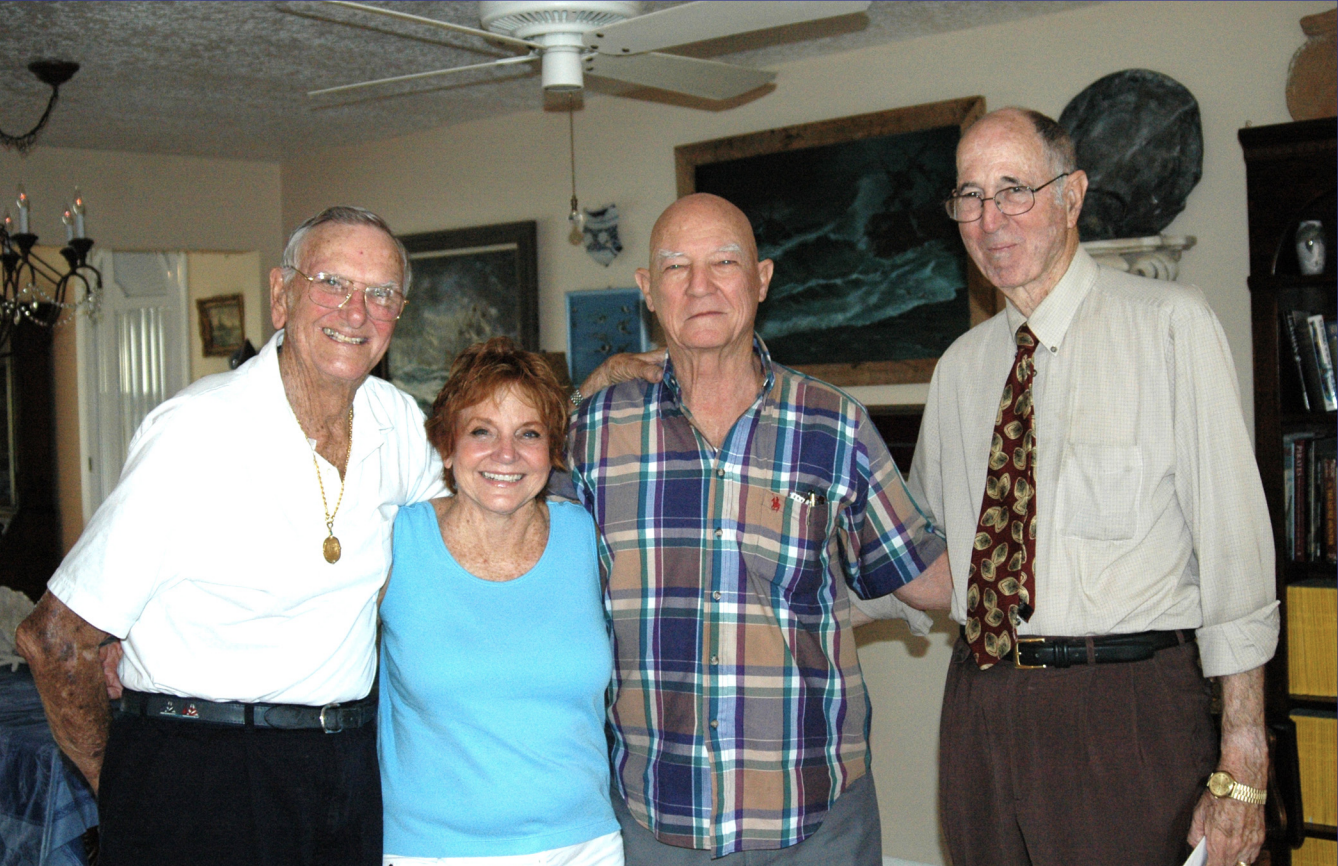Recently we received word of the passing of Carl Ward on October 30, 2017. Fleet Society Director Ernie Richards, a lifetime friend, thought it appropriate that we acknowledge his passing by posting some biographical information about this most interesting man. Ernie provided the following text:
CARL WARD
14 December 1931—30 October 2017
Carl’s Family posted this obituary in The Miami Herald on 4 November 2017:
“On Oct 30, 2017, Carl began his eternal time with our Heavenly Father. He has heard from the Lord, “Well done thou good and faithful servant.” Carl is survived by his wife Jacquelyn (Jackie) Boling Ward of 63 years, and his brother Richard Ward. He was a loving father to Caryn, David (Pauline) and Heidi (Theodore Salb, Jr.), an awesome grandpa to Caryn (Michael Baldwin), Laura (Vanner Aleman), Brittany, Teddy, and Carole Ann and a proud great-grandpa to Madelyn, Christopher and Amelia.”
“Carl’s faith was strong and he delighted in the Lord. He was a servant to all; serving his country in the Navy, his community on the Miami Beach Police Department, and as a Deacon. Much of Carl’s free time was spent fishing or diving. His warm and infectious smile was his trademark, making friends everywhere he went. He was loved by all. Carl was a storyteller, poet at heart, and loved a good joke. While, he will be greatly missed, we rest in the assurance of meeting again. In lieu of flowers the family is requesting donations be made to Riverside Baptist Church, Miami, FL or the Miami Rescue Mission.”
A graveside Memorial and Celebration of his Life will be held at the Delray Beach Memorial Gardens (700 8th Avenue, Delray Beach, FL 33444—Northwest corner of SW 10th Street and SW 8th Avenue) at 10:30 a.m. on Saturday, 18 November 2017.
Read part of Bob Weller’s accounting of Carl’s salvage work in the Keys:
“Somehow, El Populo escaped the vigilant eyes of salvage divers during the rush of the 1950—1965 years when many of the 1733 Spanish fleet were located and salvaged. Finally, three divers: Carl Ward, Carl Frederick, and Lee Harding located the wreck quite by accident. It was one of those crisp, clear days with unlimited bottom visibility in the Upper Florida Keys, and the large cannon lying on top of the ballast pile was the first indication that they had discovered a virgin wreck site. During their initial search of the area they located, and later recovered, a small bronze mortar (type of cannon) with a foundry mark that has only recently been identified. The three divers thought that they had the Populo, but they were never sure of it until they recovered a “pillar dollar” dated 1732. This nailed it down as a 1733 ship, and what records were available indicated that this was the right area. Further recoveries included a K’ang Hsi porcelain cup, a silver plate, a small pair of scissors, a pair of brass dividers, a small bottle, an ivory string binder for a musical instrument, a silver and a pewter spoon, and finally … a gold ring.”
“Keeping the wreck a secret was the problem. They kept the cannons covered with sand, and although it was often difficult to relocate, they never kept a marker float anywhere near the site. The wreck remained their own private domain for about a year while they worked the area with a hydraulic dredge only when no other boats were in sight. Then a marine conservation officer by the name of Sykes spotted them working the wreck one day, and somehow the word leaked out to the diving community. Within weeks, other divers began visiting the site and, during the winter months of 1967, Martin Meylach began removing the cannon from the ballast pile. By this time the three divers felt that they had found as much as the Populo had to offer and, although it never contained the treasure they had hoped for (because El Populo carried no registered treasure at all), it was an experience they would never forget.”
“Today, El Populo lies within the bounds of Pennekamp Park, directly east of Caesar’s Creek on a bearing of 112 degrees true—a distance of four miles. Turkey Point Power Plant smoke stacks bear 296 degrees, and the Pacific Reef Light bears 68 degrees—a distance of 1.2 miles. It’s a hard wreck to find unless you have excellent visibility on a flat calm day. If you can spot the coral head that rises ten feet above the bottom with a sandy patch at the base, then El Populo lies in the sandy patch. There is little treasure left to find, but the site remains as one of the famous 1733 shipwrecks that started the salvage rush to the Florida Keys.” —Bob “Frogfoot” Weller, excerpted from PLVS VLTRA Newsletter, 1ST-Quarter, 1988.
Carl Ward was a powerful and amazing man. Formerly a policeman for the City of Miami, he also served as a driver and bodyguard in Miami for the likes of Julio Iglesias and Diana Ross. And … not only did he make a name diving and salvaging on the 1715 Spanish Silver Fleet, but he and his dive crew made big news working on the remains of the 1733 Spanish Fleet in the Florida Keys. Carl was an avid records-keeper, resulting in his authorship of SHIPWRECK IN THE FLORIDA KEYS 1733. When Carl introduced his book at the 2015 F.U.N. (Coin) Convention in Orlando, he opened his spiel, “Folks, you are looking at a ‘Native Floridian’!” (A fact he was always proud of.)
Ellie and I are very proud to have been counted among Carl’s friends; C. U. on the “other side”! —ER

Photo and Text Courtesy of Ernie Richards